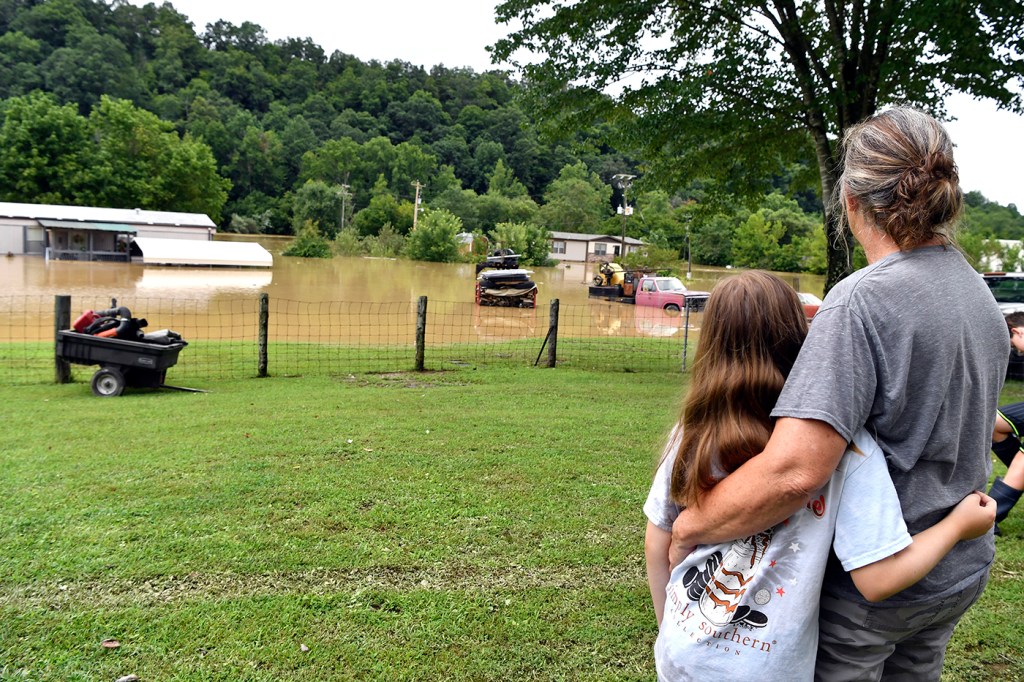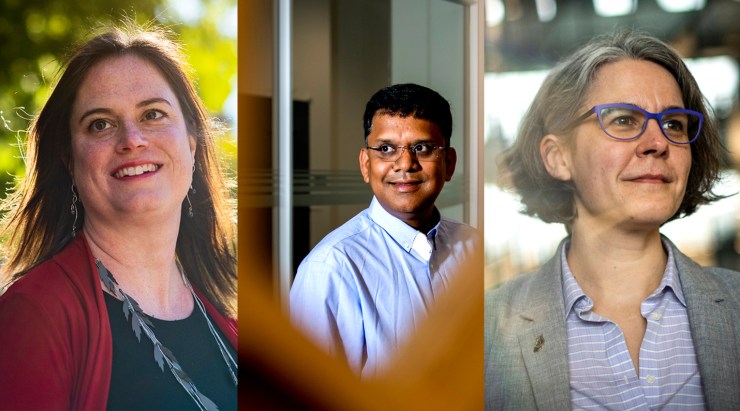The death toll in the Kentucky floods is climbing. Could this have been prevented?

Recovery efforts are underway as Kentucky enters its second week of an extreme flooding event.
The death toll from the flooding is 37 and expected to rise. Those who have died in the flooding included four young children, and many residents are still missing, CNN reports. Downed bridges, extreme heat and power outages hamper rescue efforts; meanwhile, many residents have been displaced and even more face damage to their properties.

Kentucky Gov. Andy Beshear called the flooding “the most devastating flood event our state has ever seen” during a press conference on Wednesday. After touring affected areas, he described destroyed homes, vehicles and businesses, and warned of the continued threats of storms and rising heat. “It’s hard to explain the level of damage,” he said.
Extreme weather events like the flooding in Kentucky have become more common due to climate change, experts say. But when it comes to preparing for them, the United States is lagging.
Is it possible to know if the flooding in Kentucky is a direct result of climate change?
“The science of climate attribution is still developing,” says Laura Kuhl, assistant professor of Public Policy and Urban Affairs and International Affairs at Northeastern. “There’s so many factors that go into one specific weather event. But generally speaking, you can never explicitly attribute any individual event to climate change.”
However, she adds: “We know with a lot of certainty that these types of events are becoming more common and more extreme with climate change.” Flooding is “the most frequent and costliest natural disaster in the United States,” according to research published in Scientific American, and the risk of flooding is expected to rise 26% in the next 30 years due to climate change.
Despite findings like these, “each time, we act surprised,” says Auroop Ganguly, professor of civil and environmental engineering at Northeastern’s College of Engineering. When extreme weather events happen in the United States, he says, there is an emergency response, but not enough is done at the local, state and federal level to prepare using the knowledge and technology that we have at our disposal.
“There are things that we know how to do much better than we are doing now,” he says.
In regard to floods, better weather forecasting and early warnings can help to prevent the greatest damage for the most at-risk populations. Plus, public awareness and community-building efforts can help the public better understand how to react to a flood, Ganguly says.
“There’s some collective wisdom,” about what to do in case of a flood, he says, such as to move to higher ground. “But I think it can be improved.” The Massachusetts Department of Public Safety, for example, warns residents that in case of a flood, you should not drive through flooded roads, as cars can be swept away by just two feet of water.
In the long term, investing in infrastructure like piping and tunnels that divert water (known as “gray infrastructure”) can help, along with building flood shelters and making upgrades to aging buildings. Ganguly says he would like to see investments in green infrastructure, which uses the natural environment to help store water and reduce flooding. This includes creating more spaces where soil can absorb water. “Some of these floods happen just because that much water just cannot get into the soil,” he says.
One barrier to funding these types of projects, however, is denial that climate change is impacting the United States. “For a long time, the narrative around climate change has been that this happens somewhere else,” says Alexandra Meise, associate teaching professor at the Northeastern School of Law. “In the past couple of years, there’s starting to be a real realization that climate change has come home.”
There is also evidence that flood response measures are not as strong in the areas where they’re needed the most. Kuhl notes that in the United States, lower-income communities are more likely to live in floodplains, and are less likely to have a home or financial security that can manage the impact of an extreme weather event like a flood. However, research shows that low-income and minority populations have more trouble accessing federal emergency funds.
Kuhl says that events like flooding in Kentucky and wildfires in California make it clear that climate change affects everybody, regardless of income. “These disasters are becoming so common that we’re starting to see them affect everyone,” she says. “It almost sounds cliche, but you can’t run away from climate change.”
But politicians are still reluctant to invest in something they perceive as having a low probability of affecting them, Ganguly says, especially when emergency funds will help following a disaster. Meanwhile, the probability of experiencing extreme weather events is increasing, and in the time between a disaster and recovery, “lives are lost and properties are damaged,” he says.
For media inquiries, please contact media@northeastern.edu.






